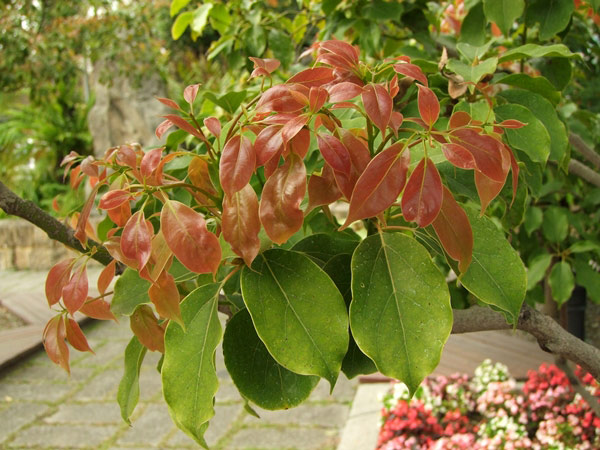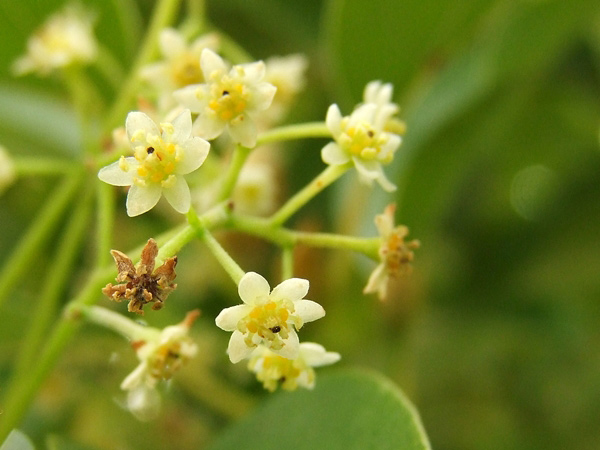Camphora kanahirae
The stout camphor tree is a native and endemic species in Taiwan. It is called “stout” camphor due to its thick and sturdy tree shape. It is distributed in mountainous areas at the altitude of about 200 to 1,800 meters in Taoyuan, Miaoli, Nantou, Kaohsiung, Hualien, Taitung, etc. with populations scattered in clusters. The densest populations are found in areas such as Nanzhuang, Luchang Mountain, and Dahu. Due to extensive development of its habitat and illegal logging, the populations in natural forests are gradually decreasing and are in urgent need of protection.
The stout camphor tree is a high-quality wood with fragrance. The sapwood is light yellow-brown, while the heartwood is dark reddish-brown. It has a slightly soft texture and is a well-known material for construction, furniture, and carving. Taiwan's forestry authorities classify it as one of the top five hardwoods. It is often used for carving religious statues. However, craftsmen generally find camphor to be harder than stout camphor when comparing woods. Although stout camphor wood dries quickly, improper drying can lead to warping, which is why camphor wood has historically been more commonly used than stout camphor wood. The camphor tree can be refined into camphor, leading to severe overharvesting and a gradual decrease in its availability. In contrast, the stout camphor tree cannot produce camphor, so it was less severely harvested in the past. However, as the resources of camphor trees in Taiwan have dwindled and “stout camphor fungus” has gained popularity as a medicinal remedy, the number of stout camphor trees being cut down has increased, especially the older giant trees. Generally, if the heartwood of a tree is hollow, its value is low, but stout camphor fungi typically grow on the inner surface of hollow trunks. Therefore, many of these aged stout camphor trees are being cut down not for the wood itself, but the harvest of fungi from inside the trunk.

